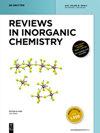Carbon-based nanomaterials: synthesis, types and fuel applications: a mini-review
IF 3.1
3区 化学
Q1 CHEMISTRY, INORGANIC & NUCLEAR
引用次数: 0
Abstract
Carbon is one of the most abundant minerals in the universe. The world’s energy needs are being unmet due to the exponential rise in population. Since its inception 20 years ago, carbon and its allotropes, including fullerenes, carbon nanotubes, and graphene, have been marketed as potential energy storage and generation materials. By solving important issues like accumulation and inadequate thermodynamic compatibility, carbon fiber, expanded graphite, and carbon nanotubes are promising functional materials that can be used to improve the performance of bipolar plates further. There are several potential uses for carbon-based nanomaterials (CBNMs) in the energy area. This mini-review provides an overview of the synthetic routes employed for producing CBNMs, categorizing them based on their types, elucidating their diverse applications in fuel energy systems, and emphasising the uses of CBNMs in energy. The advantages and disadvantages of several synthetic processes have been examined and compared. The types of CBNMs, like carbon nanotubes, graphene, carbon dots, and fullerenes, are explored in terms of their unique structural properties and fabrication methods. Furthermore, the utilization of CBNMs in fuel energy systems, such as fuel cells, energy storage devices, and catalysis, is comprehensively reviewed.碳基纳米材料:合成、类型和燃料应用:微型综述
碳是宇宙中最丰富的矿物质之一。由于人口呈指数级增长,世界能源需求得不到满足。自 20 年前诞生以来,碳及其同素异形体,包括富勒烯、碳纳米管和石墨烯,一直作为潜在的能源存储和发电材料被推向市场。碳纤维、膨胀石墨和碳纳米管解决了积聚和热力学兼容性不足等重要问题,是很有前途的功能材料,可用于进一步提高双极板的性能。碳基纳米材料(CBNMs)在能源领域有多种潜在用途。这篇微型综述概述了生产碳基纳米材料的合成路线,根据碳基纳米材料的类型对其进行了分类,阐明了它们在燃料能源系统中的各种应用,并强调了碳基纳米材料在能源领域的用途。对几种合成工艺的优缺点进行了研究和比较。从碳纳米管、石墨烯、碳点和富勒烯等 CBNMs 类型的独特结构特性和制造方法方面进行了探讨。此外,还全面综述了 CBNM 在燃料电池、储能装置和催化等燃料能源系统中的应用。
本文章由计算机程序翻译,如有差异,请以英文原文为准。
求助全文
约1分钟内获得全文
求助全文
来源期刊

Reviews in Inorganic Chemistry
化学-分析化学
CiteScore
7.30
自引率
4.90%
发文量
20
审稿时长
1 months
期刊介绍:
Reviews in Inorganic Chemistry (REVIC) is a quarterly, peer-reviewed journal that focuses on developments in inorganic chemistry. Technical reviews offer detailed synthesis protocols, reviews of methodology and descriptions of apparatus. Topics are treated from a synthetic, theoretical, or analytical perspective. The editors and the publisher are committed to high quality standards and rapid handling of the review and publication process. The journal publishes all aspects of solid-state, molecular and surface chemistry. Topics may be treated from a synthetic, theoretical, or analytical perspective. The editors and the publisher are commited to high quality standards and rapid handling of the review and publication process.
Topics:
-Main group chemistry-
Transition metal chemistry-
Coordination chemistry-
Organometallic chemistry-
Catalysis-
Bioinorganic chemistry-
Supramolecular chemistry-
Ionic liquids
 求助内容:
求助内容: 应助结果提醒方式:
应助结果提醒方式:


